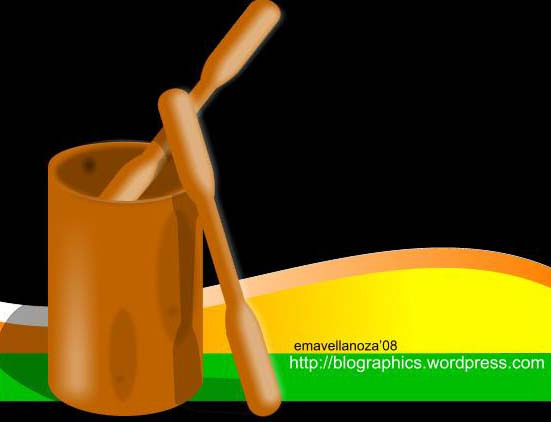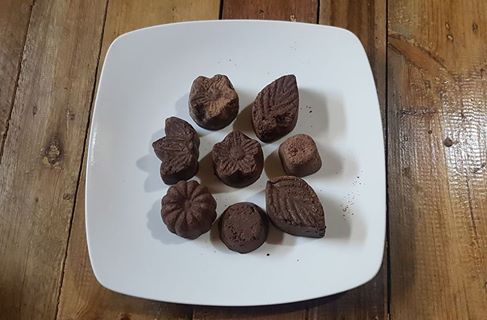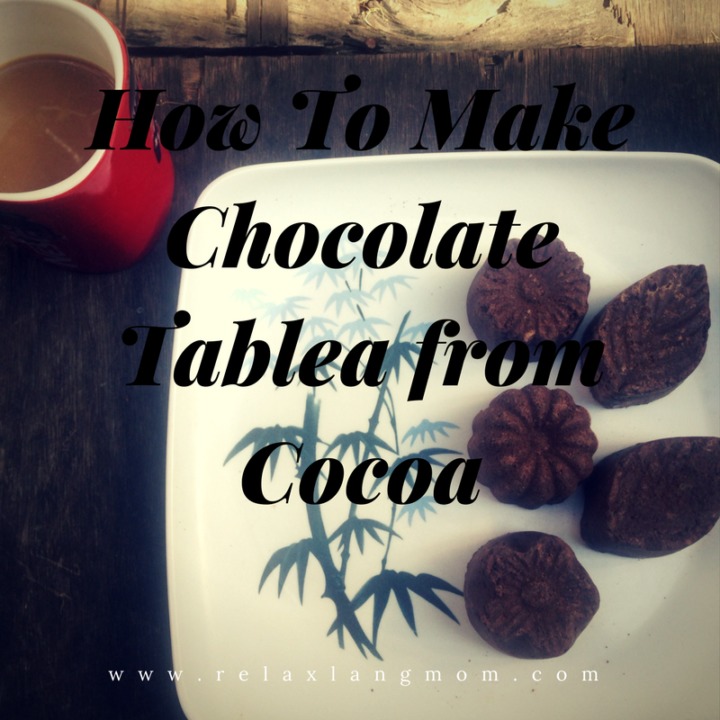Tsokolate eh or Tsokolate ah? One of my favorite chocolate jokes, which is a lesson in Filipino literature and history. One that I’d let your discover for yourselves here!
I am not a fan of chocolate. There I said it! Well at least not the sweet sugary kind that’s been flooding the market since the Americans conquered us.
But hot chocolate, ohh, that wonderful delicious smell, now I love that. I remember when I was very young, one of our lola’s would make Tableas from the cocoa fruits gathered from our backyard. When she died no one knew how to make them anymore. Then we rediscovered cacao in our backyards and we fell in love, yet again. Our homemade hot chocolate drink far surpasses the thin, unremarkable, and forgettable drinks being sold in weekend markets in posh villages. It is full bodied, creamy, superbly delicious, and smells heavenly. In fact, you can drink it without milk and you’d still feel satisfied.
The Philippines, though a producer of cacao in the Spanish era, was not able to and did not develop an industry for it. At best, we are able to make Tablea, a product usually associated with Batangas and neighboring provinces. Tablea is a flat disc, usually round cocoa balls used to make hot chocolate.
There are three main lineage for cacao. The common Forastero, the hybrid Trinitario and the rare one, Criollo. Nowadays, cocoa lineage is mainly Trinitario and Forastero, both mixes. Only 5% of the world’s production is Criollo. Considered to be the “prince of cocoas,” Criollo is prized as an ingredient in the very best of chocolates. Criollo chocolate has a distinctly reddish color, and an equally distinctive complex taste which can include flavors of caramel, nuts, vanilla and tobacco.

Recently, there is a local government campaign from DAR/ DA that aims to revive our cocoa industry. Through happy coincidence, they discovered that our island of Marinduque still has some of the original and rare Criollo cocoa that came directly from Venezuela and South America. Though sampling shows that majority is a mix of Trinitario and Criollo, it’s a great find and one that we intend to nurture as a cultural heritage.
How To Make the Tablea
Cacao fruits are gathered from cocoa trees. These cocoa trees produce fruits all year round. The beans are then removed from the pods and fermented. When I was young, we used to eat them and leave the beans for drying. The pulp, a soft white mass covering the seeds is sweet and sour and we suck on it till its gone. It was fermented in our mouths hahahah! ???? ???? The Batangas tableas, from what I’ve seen are not fermented. Davao Tableas are. Fermentation, IMHO, is a very important step in making sure you have a great chocolate experience. This develops the flavor, the smell, and the texture of the cacao beans. In order to ferment, my father gathers fresh banana leaves, wraps the fresh cocoa beans and leaves it in a cool dark place for 3 – 7 days (depends on the cocoa type). Some beans ferments faster.
Drying the cocoa is the longest part of the process. This takes about 3-7 days. Be careful when drying your beans. Make sure there are no room for moisture so there’s no chance of molds in your beans. Then the beans are roasted for up to 3 hours like you would roast coffee. Our elders call it “tayangtang”, a process of slow roasting the beans to further develop the flavors and remove rancidness.
The next thing is to grind the beans and remove the hull. In my memory, my grandmother would take out the ‘bayuhan ng palay” called Lusong at Halo, and use it to pound the dried cocoa beans. Must have taken a toll on her back!

Now, my father uses a manual grinder (which still takes time and lots of sweat!). Our Tableas are ground manually until free from chunks. After grinding, the ground cocoa are now formed into balls or in this case, shaped in a molder. I’ve see some other Tableas in the market that already has sugar in it. I think it’s best to use Muscovado sugar which brings another depth of taste to the tableas as opposed to regular sugar.

Have more info? Questions? Don’t hesitate to leave a comment! Lets talk more about chocolate making!


6 thoughts on “How To Make Chocolate Tablea from Cacao”
when will the muscovado sugar be added? before grinding the beans or after?
Hi! Add it after. :)
Can the tablea still harden without putting it in the ref? I am trying to make some now while away from home with no ref. huhuhu
Hi Abby! No need to put the tablea on the ref. it will harden on its own.
hi! i just need a help to know the steps by steps o n how to make tablea at home to start my own business my brother will support me for the ground cocoa ready for making the tablea …thank you